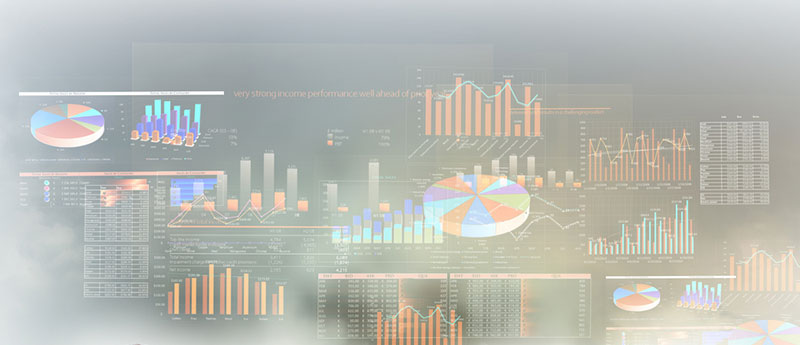Analytics – The path forward
Every organization has a need to report and analyze data for their operations and growth. The extent of investment depends upon the size and maturity that the organization has in providing every employee with information that can be used to make decisions.

Historically, the limited options involved developing a data mart using scripts/procedures (like PL/SQL) or using data modeling tools like Oracle Discoverer. Even though customers had evolved and started building data warehouses, there was a significant cost (both infrastructure and software) involved that did not provide for much flexibility. Users sometimes worked around the data warehouse and manipulated data for their own reporting needs.
This was a big challenge for smaller organizations that could not make the investment and also for bigger enterprises because the inflexibility in the architecture and infrastructure did not allow for a structured growth.
Even though it has been easier for customers to decide and move to the cloud for business applications (like Oracle ERP Cloud, Salesforce), the same has not been true for Reporting and Analytics. The number of options with different tools and solutions have been varied and makes it difficult for an average customer to choose the right cloud infrastructure, architecture and tools that would allow for growth in business reporting, analysis and data itself.
In this age of innovation, every customer deserves a solution that is suitable for both cost and growth.
- Customers with a need to share information across departments and scale for faster growth
- Require Native support for structured and semi structured data
- Cloud ERP, Salesforce or NetSuite customers that want to try out and experiment with a data warehouse in a smaller scale find it beneficial to start with Snowflake. The ability to scale compute and storage independently and also the flexibility of paying for the actual usage (based on data loaded, queries run) enables customers to manage cost and also leverage the functionality of a data warehouse
- Customers that have the need to share and create copies of data across departments to enable analysis across different groups (analysts, data scientists, end users) benefit from the snowflake architecture. With in-built automated indexes, performance is managed based on the operations performed
- Data warehouse in the AWS ecosystem
- A high performance data warehouse with uniform and consistent compute requirements, but with the option to scale as needed
- Stage massive amount of data with S3, low cost storage solution
- Ability to expand data processing needs with the choice of tools available from AWS
- Customers that want to move towards a Data Lake solution
- Redshift is integrated with AWS Lake Formation that helps customers to set up a secure data lake. (Lake Formation helps you collect and catalog data from databases and object storage, move the data into your new Amazon S3 data lake, clean and classify your data, and secure access to your sensitive data)
Oracle Autonomous Data Warehouse (ADW)
- Customers that have made a significant investment in their existing warehouse with SQL and PL/SQL programs and would like to remain within the Oracle framework
- Significant licensing benefits with a combined package for ERP and Analytics
- The database performance has been very good (observed at customer sites and existing customers using Oracle’s standard edition would benefit from moving to ADW ( Autonomous Data Warehouse)
- Oracle is catching up with some of the features that Snowflake and AWS have to offer, including the automation for performance management that is slated for the coming release.
In most cases, irrespective of the technology, customers are able to store structured, semi-structured files and execute queries to fetch both structured & semi-structured information.
Data Lake
Even though traditional on-premise databases have been moving to the cloud, users are still looking for information that they did not have access to. Not every attribute from the source application systems is stored in the warehouse and access to data stored in the files outside the application is limited. The ability to store the raw data (without transformation) from the source applications in a Data Lake makes it easier for the user to query the information and report from it. External data files (Marketing, Competitor data, Goals and targets, Budgets) stored in a Data Lake can be combined with structured data from the data warehouse for reporting.
Historical information maintained over many years can finally be used for predictive analytics.
Data visualization is an art that has the potential to enhance productivity in an organization. Users are ever looking for tools that they can use to create beautiful charts and graphs to measure departmental performance. Tableau and Power BI are increasingly serving this purpose and making it easier.
Oracle Analytics Cloud (OAC) provides a holistic solution with enterprise wide security and collaboration. OAC has an advantage in that a similar technology is used for reporting within Oracle Cloud applications.
Standard visualization tools are able to connect to any database, report on disparate data sets and convert them into reporting dashboards. Even with the many choices available, the selected option should have the ability to easily report on pre-defined models, views, structured and semi-structured data sets.
Apps Associates can help recommend the appropriate technology stack based on the projected data warehouse and data lake roadmap. We can help with the selection, implementation and support of your analytics environment.
